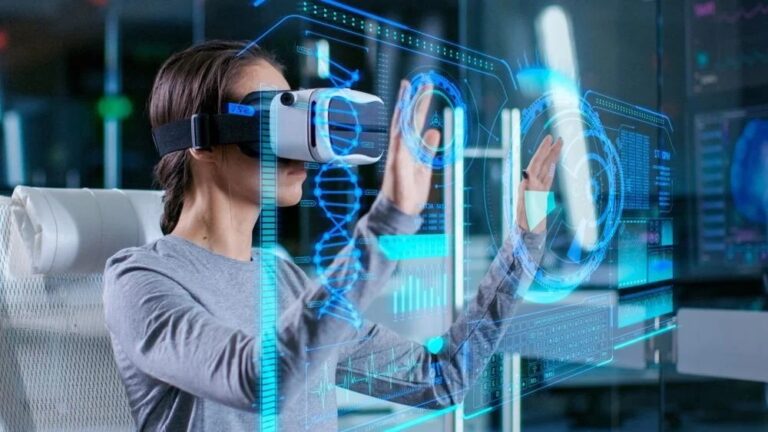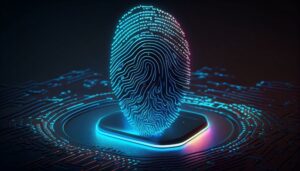Biometric identification refers to the use of unique biological characteristics or behavioral traits to authenticate and verify the identity of individuals. This article explores the fundamentals, types, applications, benefits, challenges, and future trends of biometric identification systems, highlighting their importance in enhancing security, improving user experience, and transforming various industries.
Fundamentals of Biometric Identification
Biometric identification systems rely on distinctive biological traits or behavioral patterns that are difficult to replicate or falsify. Key characteristics include:
- Biometric Modalities:
- Fingerprint Recognition: Analyzes unique patterns of ridges and valleys on fingertips.
- Facial Recognition: Measures facial features and contours for identification.
- Iris Recognition: Scans unique patterns in the iris of the eye.
- Voice Recognition: Analyzes vocal characteristics and speech patterns.
- Palm Vein Recognition: Identifies individuals based on vein patterns in the palm.
- Behavioral Biometrics: Analyzes typing rhythm, gait, and other behavioral patterns.
- Authentication Process: Captures biometric data through sensors or cameras, converts it into digital information, and compares it against stored templates in a database to verify identity.
- Security and Privacy: Ensures data protection and privacy by encrypting biometric data and adhering to stringent security protocols.
Types of Biometric Identification Systems
- Unimodal Systems: Use a single biometric modality (e.g., fingerprint, facial recognition) for identification.
- Multimodal Systems: Combine multiple biometric modalities to enhance accuracy and reliability of identification (e.g., fingerprint and facial recognition).
- Continuous Authentication: Verifies identity continuously based on ongoing behavioral patterns or physiological characteristics.
Applications of Biometric Identification
- Access Control and Security: Securing physical premises, buildings, and restricted areas using fingerprint or facial recognition systems.
- Identity Verification: Authenticating individuals for financial transactions, government services, healthcare, and border control.
- Attendance and Time Management: Tracking employee attendance and managing work hours using biometric systems.
- Personal Devices: Unlocking smartphones, tablets, and laptops using fingerprint or facial recognition for enhanced security and user convenience.
Benefits of Biometric Identification
- Enhanced Security: Provides robust authentication and reduces the risk of unauthorized access or identity theft compared to traditional password-based systems.
- Convenience: Eliminates the need for remembering and managing passwords, enhancing user experience and efficiency.
- Accuracy and Reliability: Offers high accuracy in identifying individuals based on unique biometric traits, reducing false positives and negatives.
- Scalability: Easily scalable across large organizations or systems without compromising security or performance.
Challenges in Biometric Identification
- Privacy Concerns: Ensuring secure storage and transmission of biometric data, and addressing concerns about data breaches and misuse.
- Accuracy and Performance: Dealing with environmental factors, aging, injuries, or changes in biometric traits that may affect recognition accuracy.
- Regulatory Compliance: Adhering to legal and regulatory requirements related to data protection, privacy, and usage of biometric information.
- Integration Complexity: Ensuring compatibility and seamless integration with existing IT infrastructure, applications, and databases.
Future Trends in Biometric Identification
- AI and Machine Learning: Advancing biometric systems with AI algorithms for continuous improvement in accuracy, speed, and adaptability to diverse environments.
- Biometric Wearables: Integrating biometric sensors into wearable devices for continuous authentication and health monitoring applications.
- Blockchain Technology: Enhancing security and privacy in biometric data management through decentralized and immutable records.
- Behavioral Biometrics: Expanding use cases for identifying individuals based on unique behavioral patterns, such as keystroke dynamics and mouse movements.
Conclusion
Biometric identification systems play a crucial role in enhancing security, improving efficiency, and delivering a seamless user experience across various industries and applications. As technology continues to evolve, addressing challenges related to privacy, accuracy, and integration will be essential for broader adoption and implementation of biometric solutions. By leveraging advancements in AI, sensor technology, and cybersecurity, biometric identification is poised to shape the future of authentication, identity verification, and access control in a digitally connected world.





+ There are no comments
Add yours